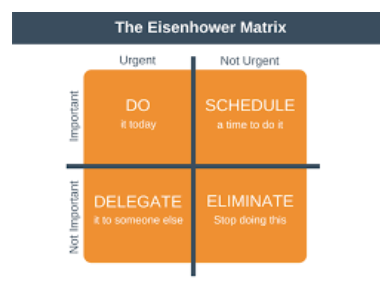We all experience feelings of insecurity, but when we suffer from imposter syndrome, or the belief that we do not deserve our accomplishments, our best energy is zapped. Yet, we do not have to remain a victim to those feelings; in fact, there are many ways we can healthily deal with this widespread affliction.
Here are some strategies for addressing imposter syndrome:
1. Raise your awareness. When we notice we are having these feelings, we want to write them down so we can explore further. How would I describe these feelings? When do they emerge? The more we are aware of our anxieties, the smarter we can become about how they operate, and the easier it will be to either shrug them off next time they pop up, or have a planned approach to deal with them.
2. Normalize imposter feelings. Guess who said these lines – “You think, why would anyone want to see me again in a movie?” “I don’t know how to act anymore, so why am I doing this?” None other than Meryl Streep. If somebody as successful and skilled as Meryl can feel these limiting beliefs, we all can. In fact, some surveys show that more than half the people we know feel like imposters at some point in their careers but they succeed despite their doubts. Effortless success is a myth, if we have advanced without real striving, it may be a sign that our goals are too small. It is helpful to normalize the initial difficulty and discomfort because achieving hard things becomes easier over time.
3. Flip your script. You can rewrite your mental programs to serve you. Instead of being debilitated by imposter thoughts, you can say, “it is common to have these feelings when I am doing something outside my comfort zone, that’s where all the possibility lies.” Mistakes and self-doubt come with the territory. If I was not feeling this, then I would be worried because I could possibly be a robot. When we try something for the first time or are learning a new skill, looking foolish is part of the job. Eleanor Roosevelt said, “Do something every day that scares you.” Most of us are rarely feel we are as qualified as we should be because if we were, then we are likely not aiming high enough.
4. Be kind to yourself. When you do well, celebrate and reward yourself, do not just keep trucking along. When you make a mistake, be patient and compassionate with yourself as errors come with the territory. What can you say to make yourself feel better and move on? Also, be sure to take pride in your achievements. You can reconnect with your younger self. Compare your current success with your past expectations. If you knew 5 or 10 years ago that you would go on and accomplish all of this, how proud would that version of you be? Knowing that you have gotten to this point doing what you are doing, could you have imagined that in the past? It helps us recognize just how far we have come.
5. Reframe failure. Winston Churchill said, “Success is not final; failure is not fatal, it is the courage to continue that counts.” What would it be like if you celebrated failure because it meant that you tried, and that is where all the learning occurs? That’s the approach taken by CEO of Spanx Sarah Blakey. She shared an experience about when she was growing up at the dinner table, how her dad used to ask her and her brother what they failed at, and then they would celebrate it. To encourage her team to take risks and fail, Blakey calls failures “oops” and wants her team to learn and laugh about them.
6. Experiment with vulnerability & seeking support. It is natural to want to keep those feelings of insecurity a secret. But when you can reveal your doubts to trusted partners, whether it be a friend, mentor, or professional coach, you break its power when you realize you are not alone and get to learn how others tackle the same challenge. I usually find that there are many more people out there who are eager to help and that can be quite reassuring as there is strength in numbers.
7. Know your strengths. When I work with clients who experience imposter syndrome, I help them discover their best selves. Many of us were built to have negative orientations because it is what kept us alive in ancient times because we needed to spot threats. That’s why now we can easily find our weaknesses while overlooking our most endearing qualities, especially if they come easy to us. Getting in touch with our strengths can serve as an incredible source of power.
8. Know your life purpose. Ok, maybe a tall order, but it is nice to spend time pondering. Mark Twain reminds us, “the two most important days in your life are the day you’re born, and the day you find out why.” Knowing our purpose and values serves as a stable foundation in those moments when we are simply unsure about ourselves, the situation, and the ever-changing, rapidly-moving world.
9. Challenge it. When we throw around these assertions, how often do we question them? Is this true, logical, constructive? What is the evidence against it? Do not blindly take those internal scripts as truths. When you parse fact from fiction, you can regain control and question assumptions that are simply false or that are likely not serving you.
10. Recognize the benefits of imposter syndrome and use them as fuel. An upside of imposter syndrome is that it can motivate us to work harder so we feel we are on par with others. We will rehearse our work for hours to make sure we are prepared and then it becomes a self-fulfilling prophecy – because we are working harder, we are getting better, and building more confidence. It makes us better learners because our humility and lack of confidence drive us to seek others out to learn. Impostor syndrome can foster a beginner mindset, that is because we want to make sure we are doing great, we are more likely to question assumptions that others have taken for granted and we rethink our strategy to offer fresh perspectives.
A good way to motivate ourselves is to talk to ourselves in the 2nd person. In a series of experiments, people gave better speeches and made better first impressions when they were randomly assigned to talk to themselves in the second person instead of the first. Rather than say, “I got this,” you can say, “You got this”. It creates some distance from your insecurities, and it seems as if you are talking to a friend or a coach and leads you to be less nervous and see stressful situations as a challenge instead of a threat.
11. Recognize the journey. Some people think that when they get to a certain point in their careers, imposter syndrome will disappear, but it doesn’t go away, it just shapeshifts as the bar is always rising. For example, writing a book was an incredible target for you, but for the next one, you will naturally aim for it to be a New York Times bestseller and will feel those accompanying doubts. Author Rich Litvin said, “The solution to imposter syndrome is the rather liberating decision to stop trying to get rid of it and instead to get good at it.” When you are on a lifelong journey, you will always have doubts that will have to be managed.
We all experience imposter syndrome at various times. While there is no one right approach to begin to combat the feeling, the most important action we can take is to experiment with different methods that can be beneficial for us to perform at our best.
Quote of the day: “What's talent but the ability to get away with something?” —Tennessee Williams
Q: What is the best way you have found to deal with feelings of self-doubt? Comment and share below, we would love to hear from you!
As a leadership development coach, I work with people to deal more powerfully with these experiences, contact me to explore this topic further.
Take control of your doubts



























